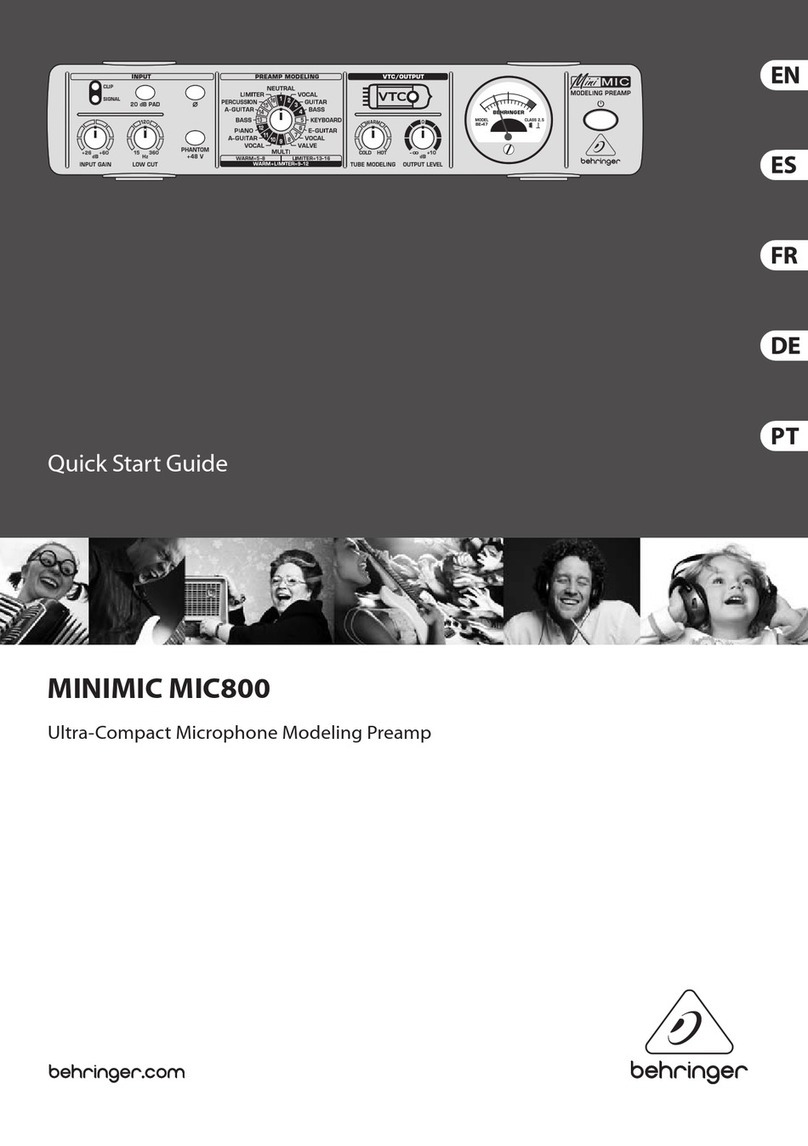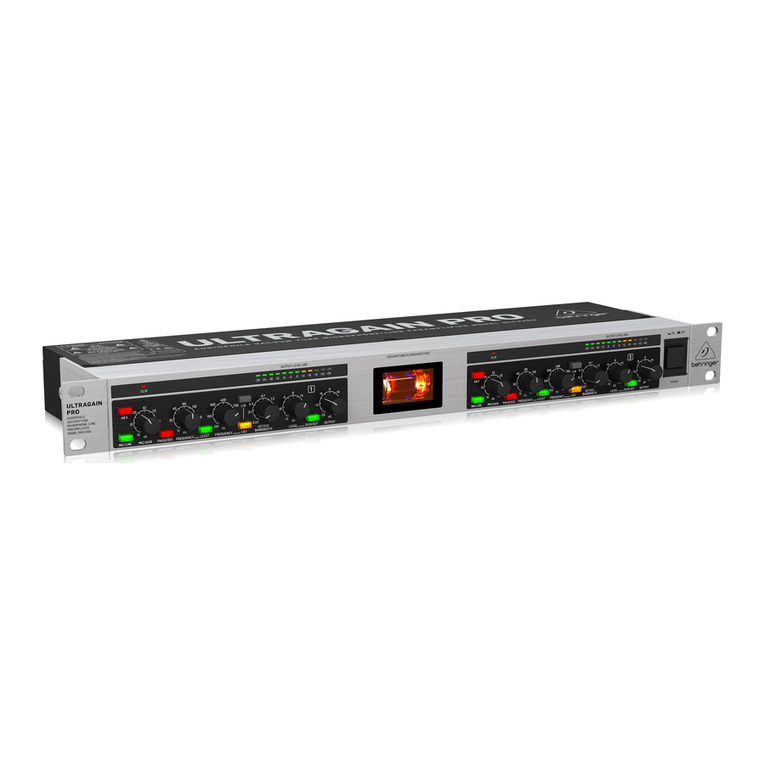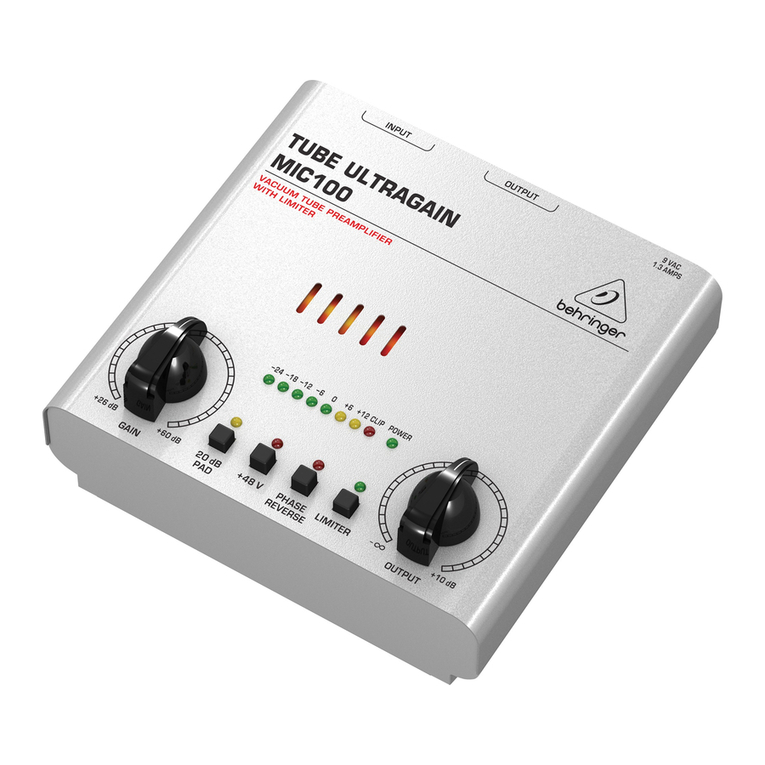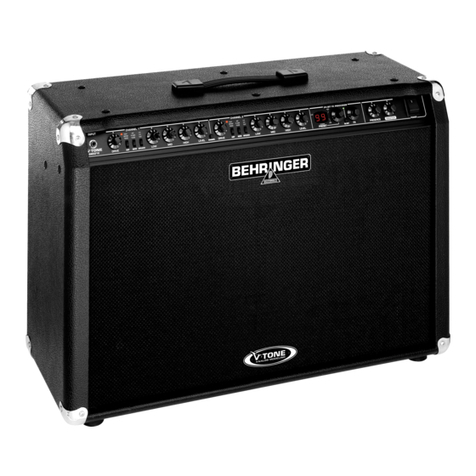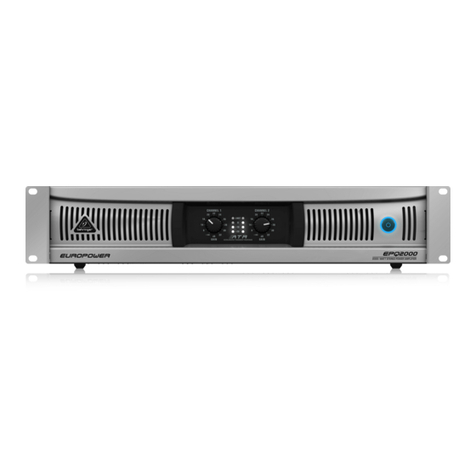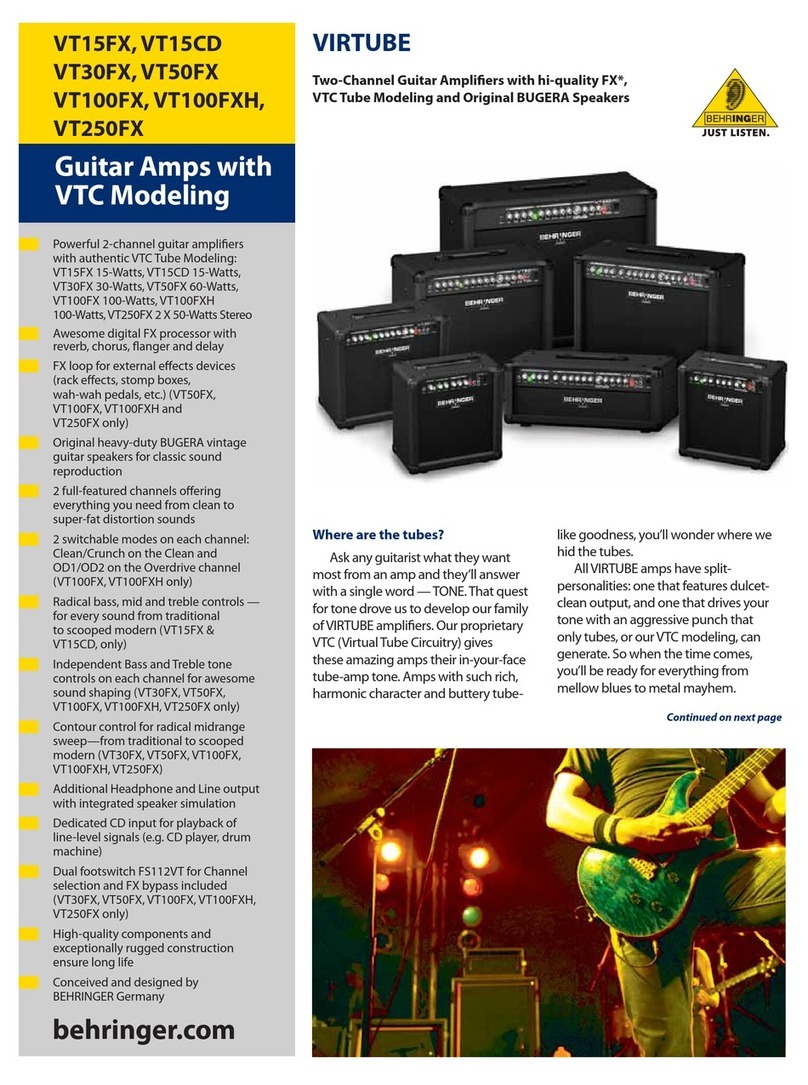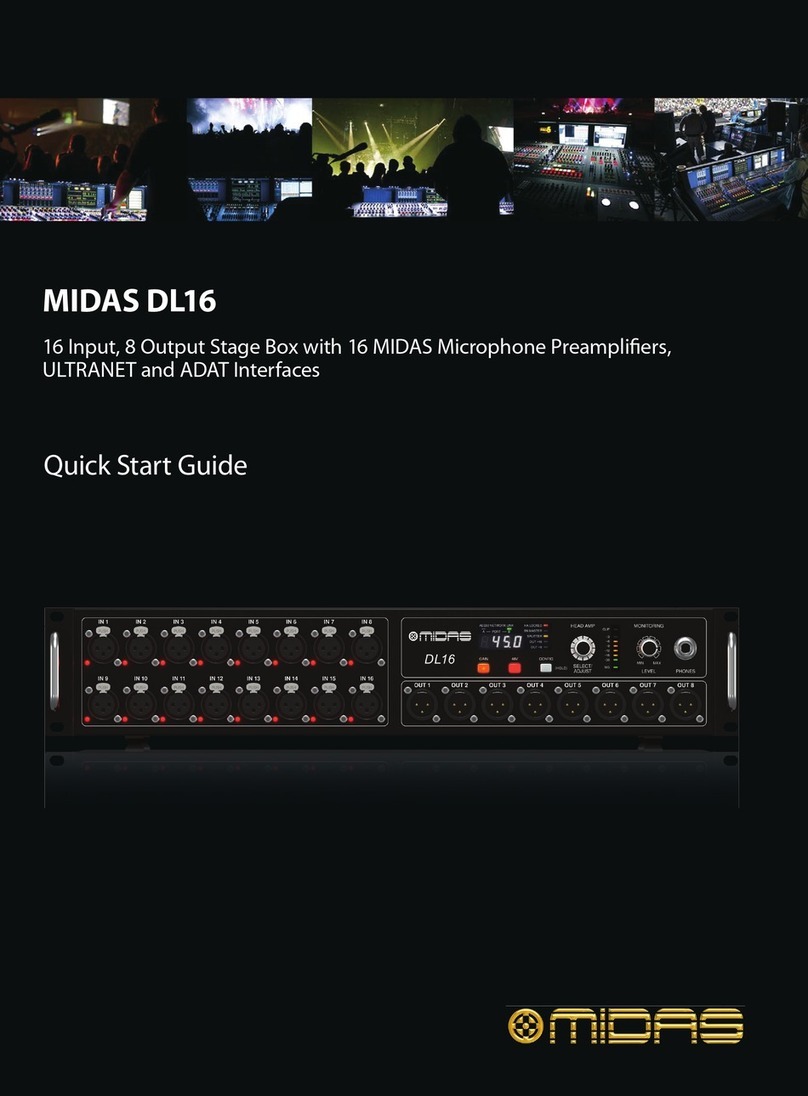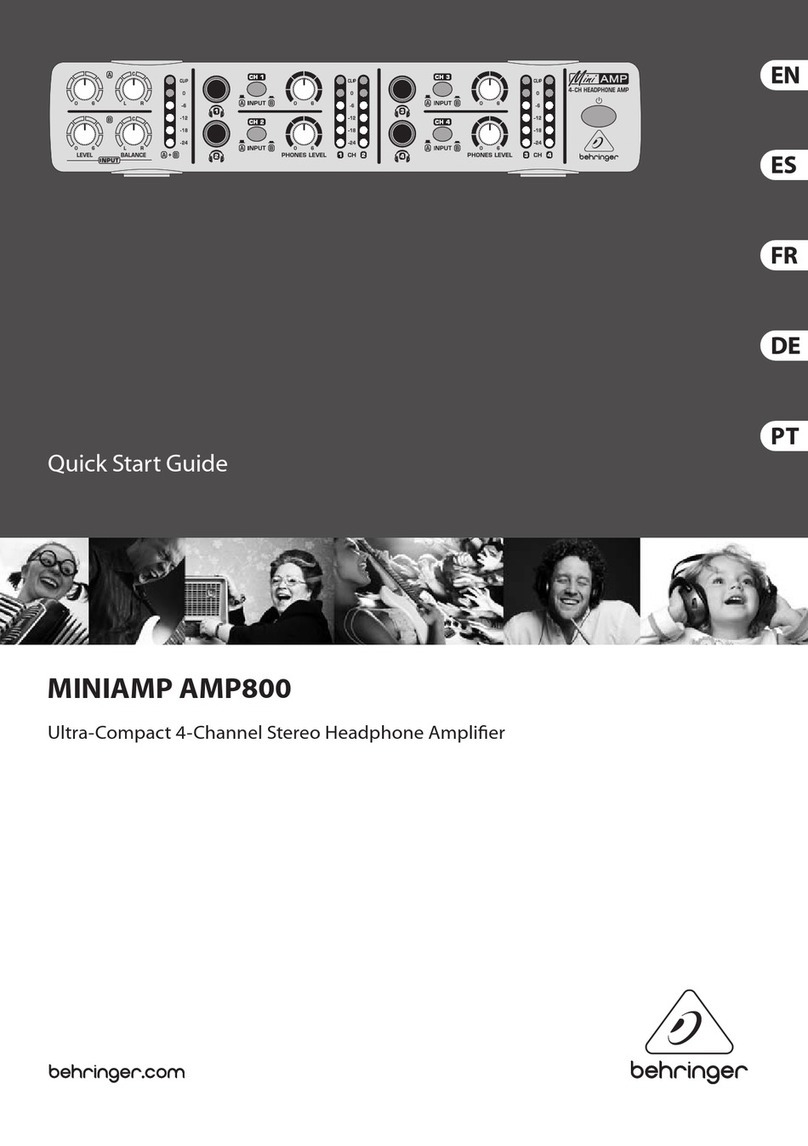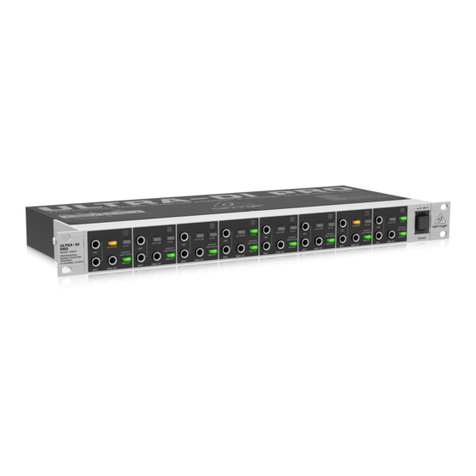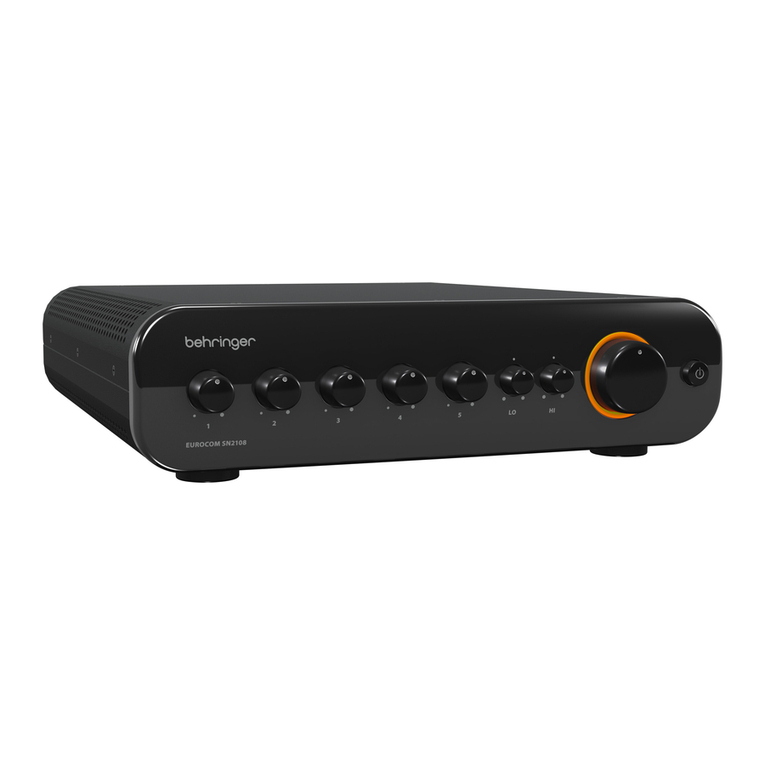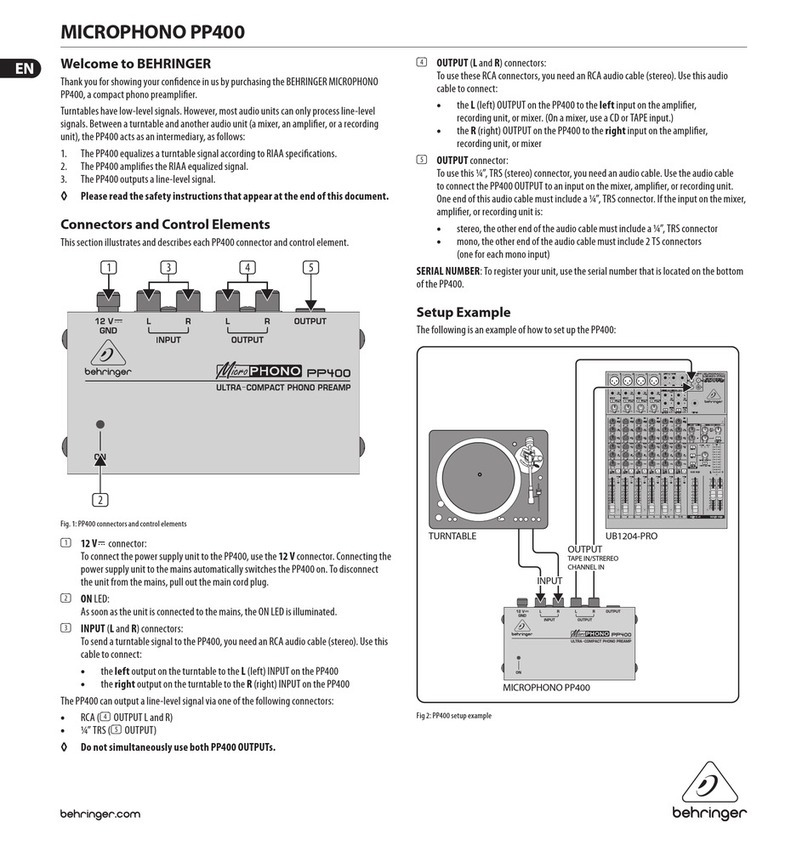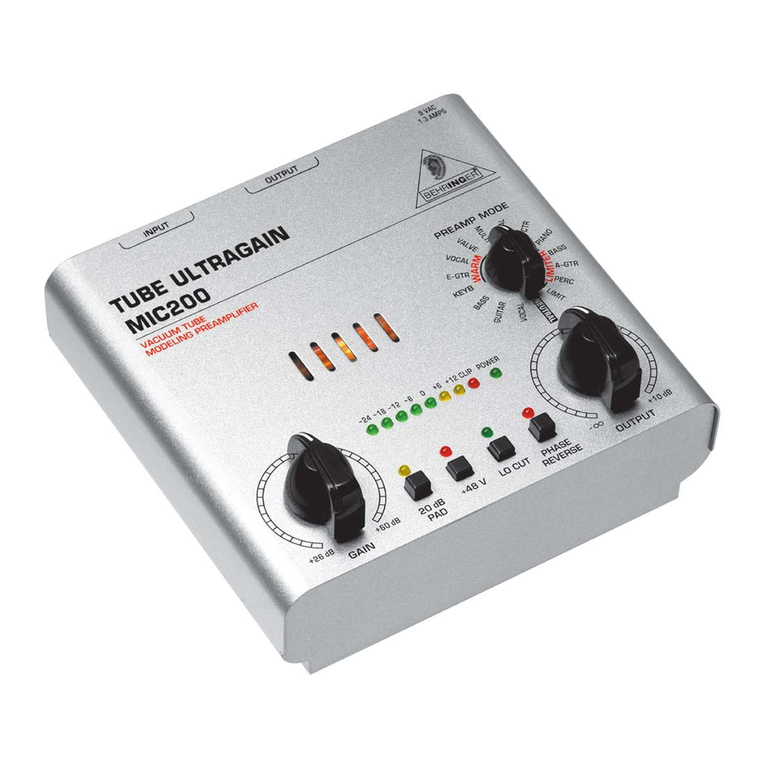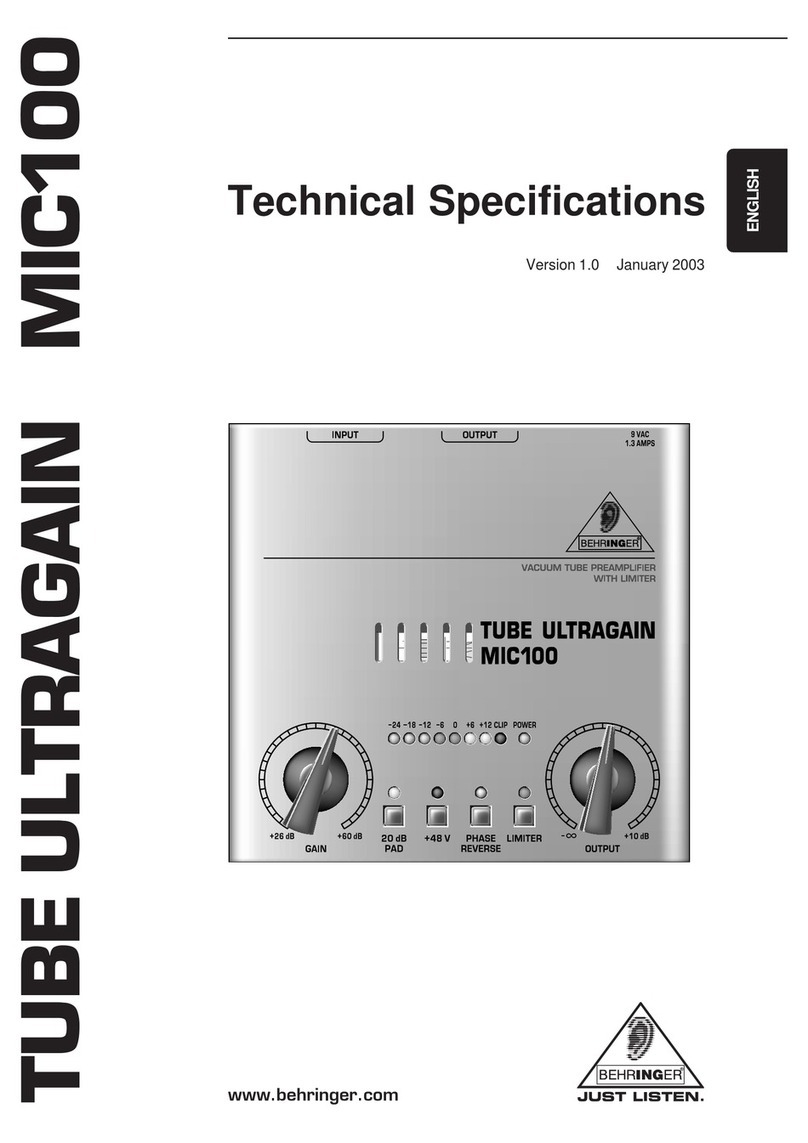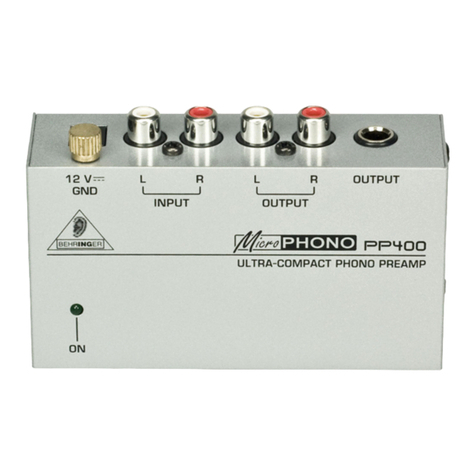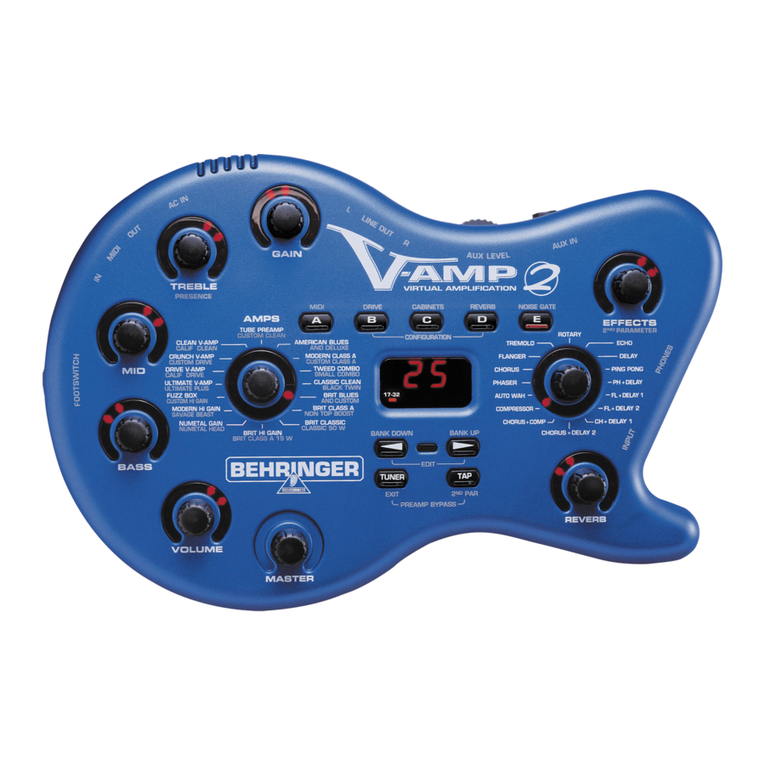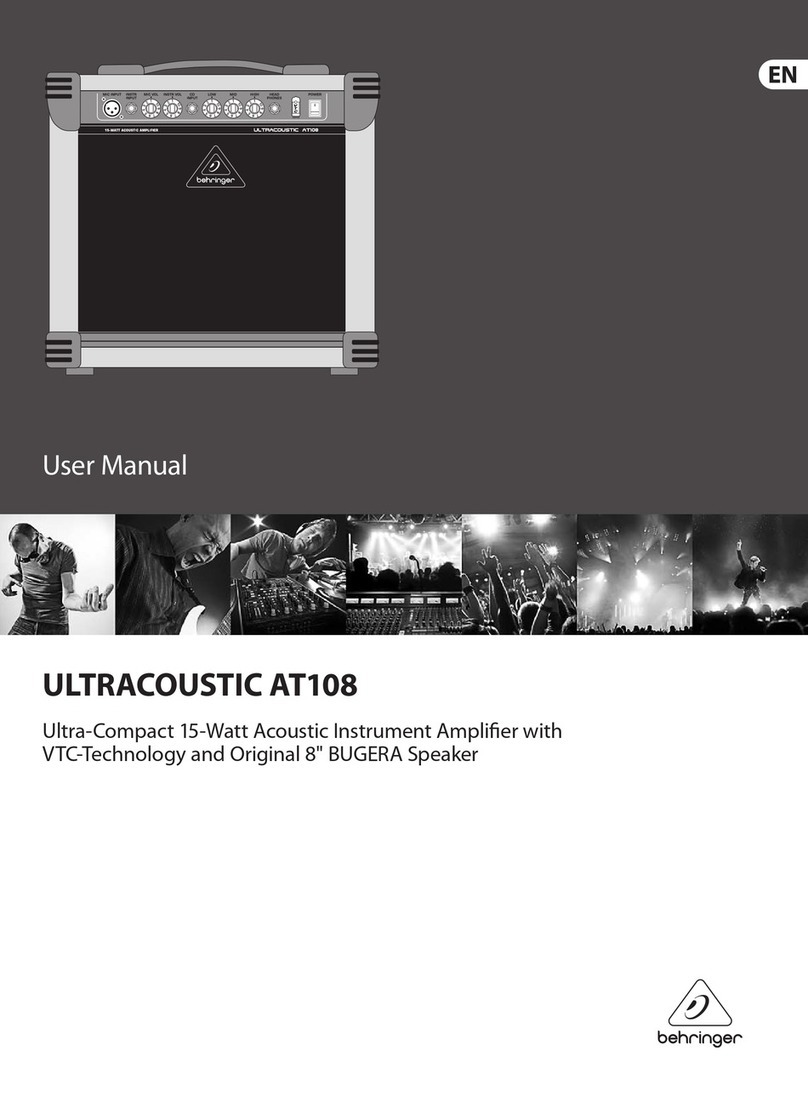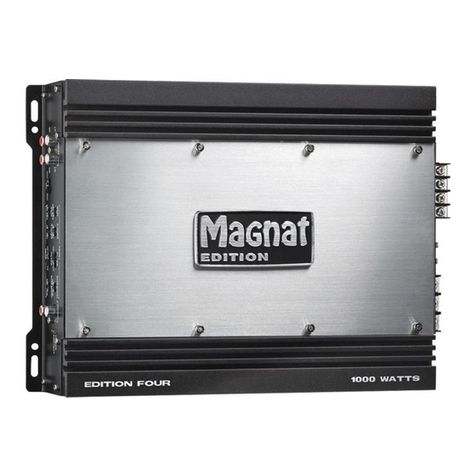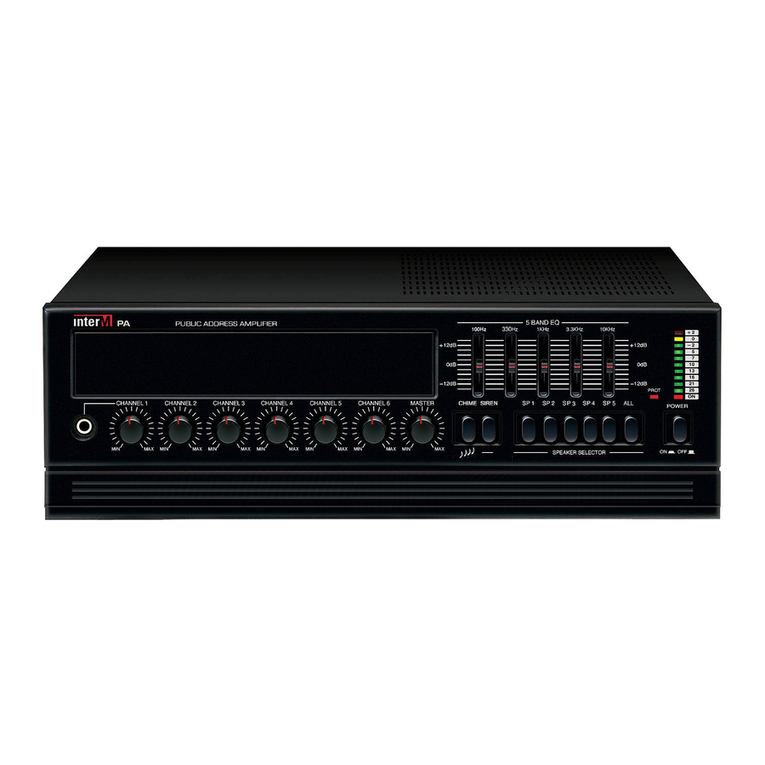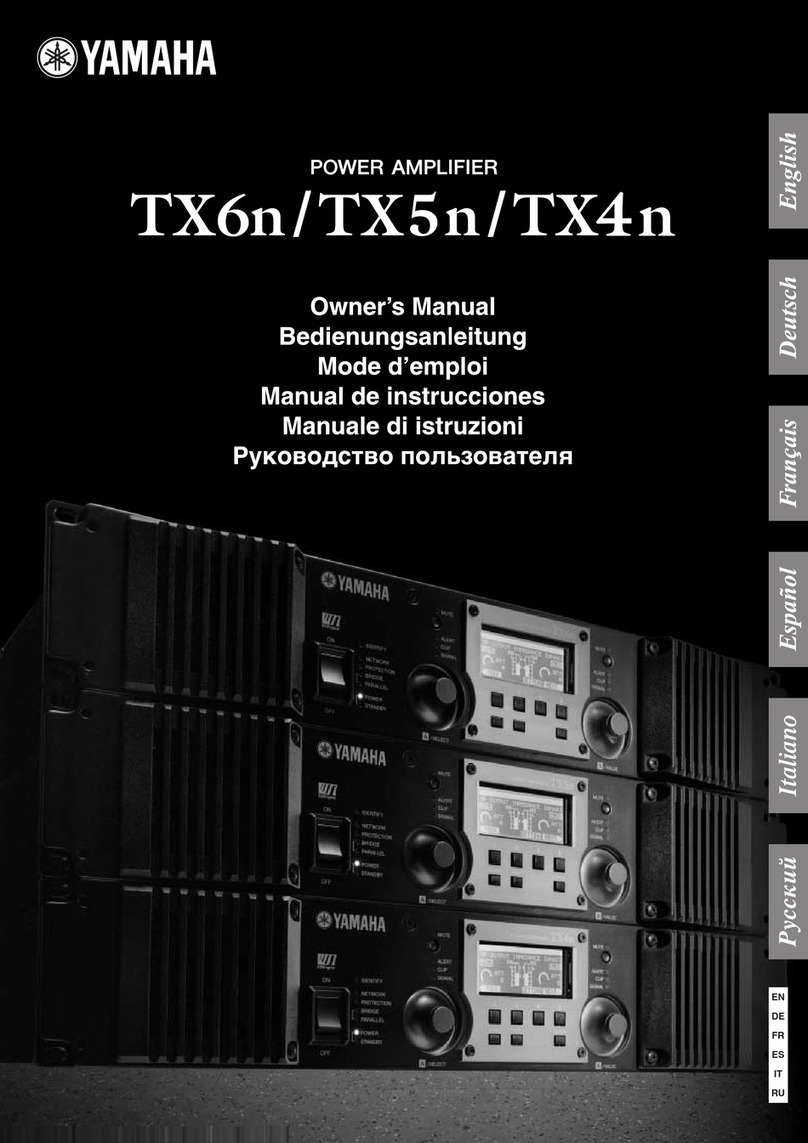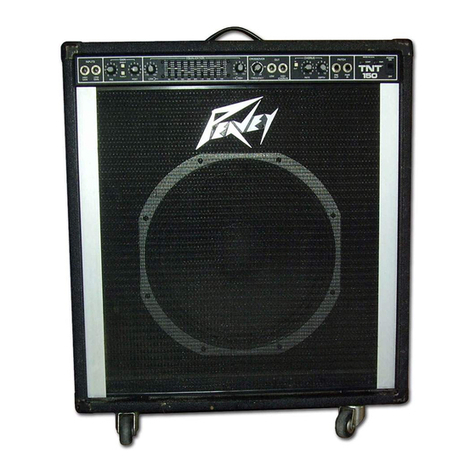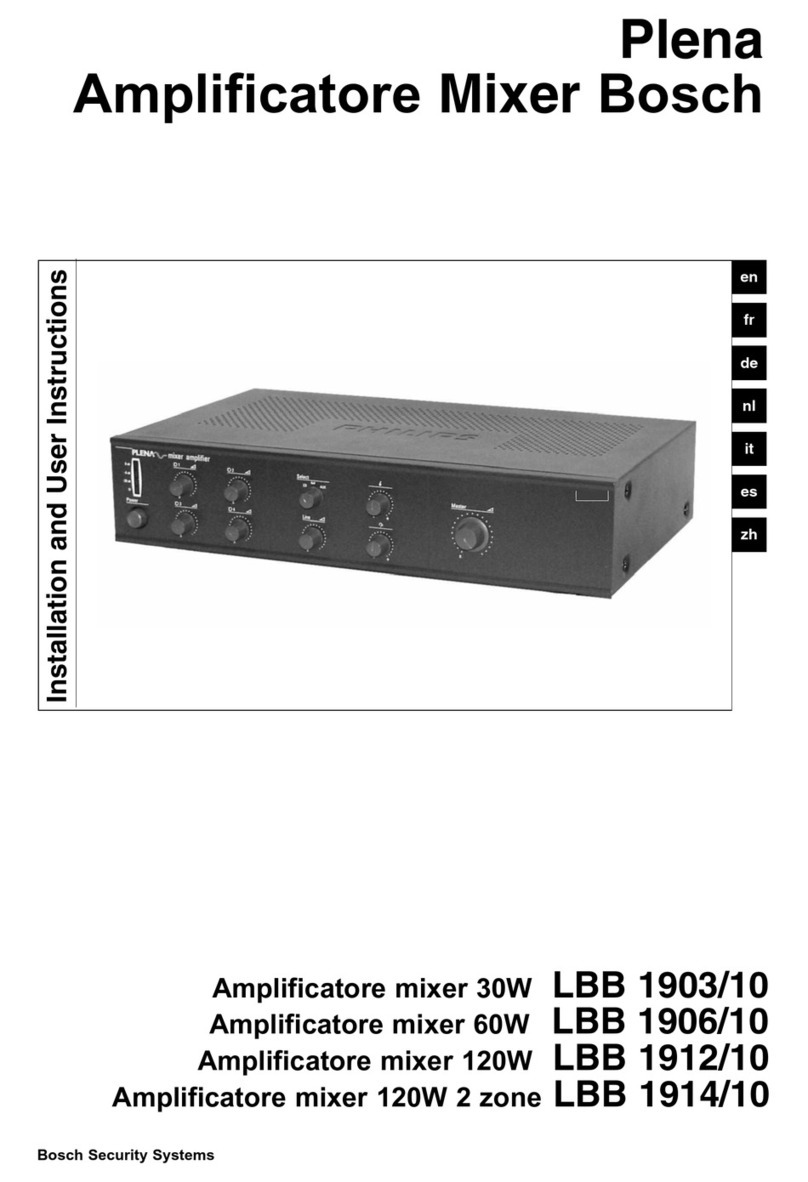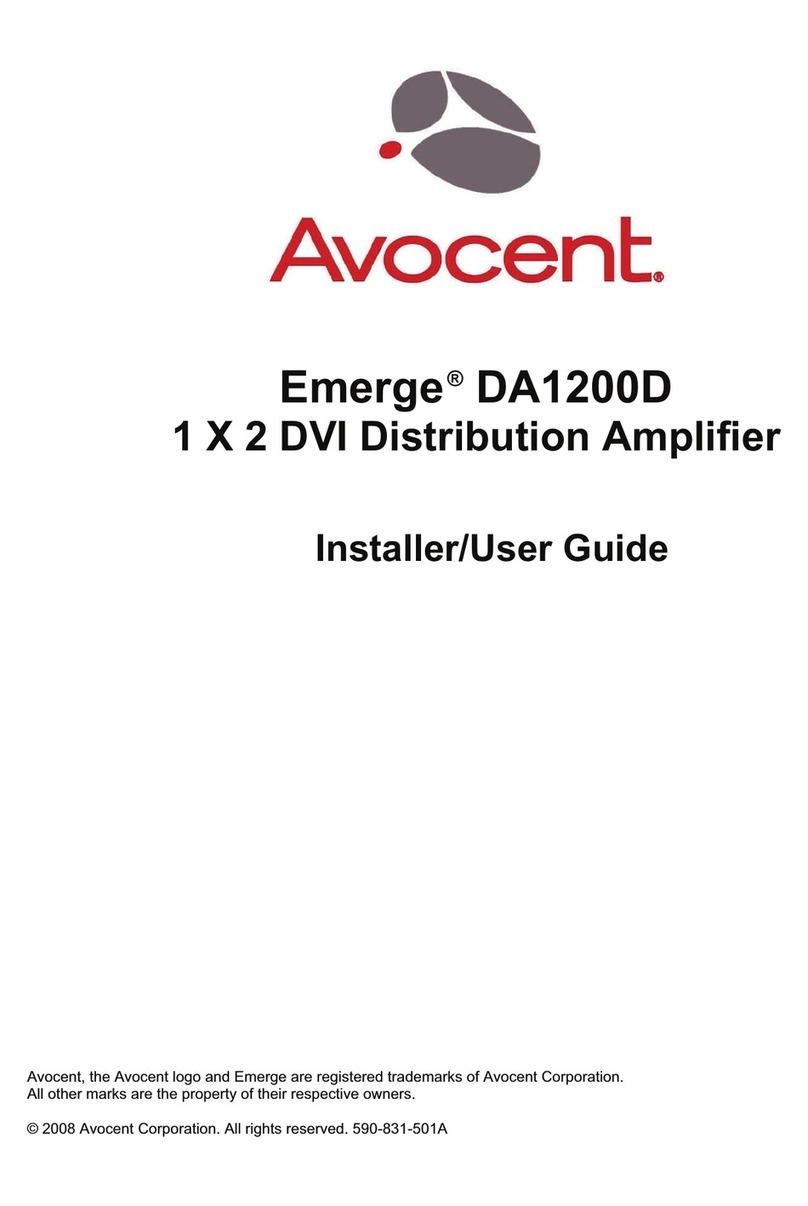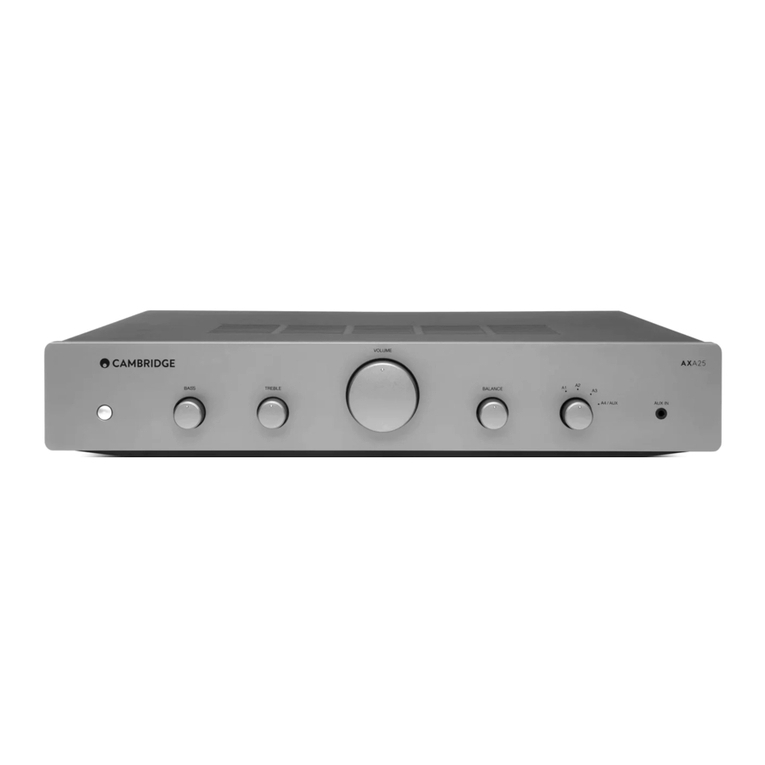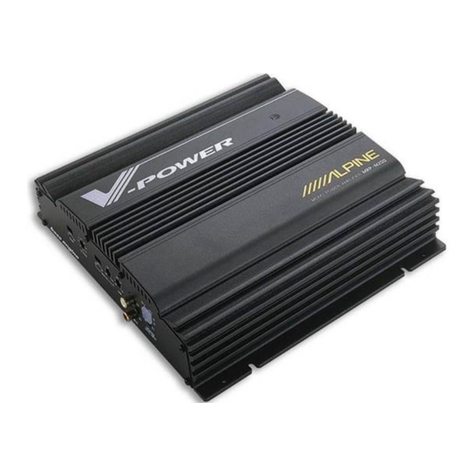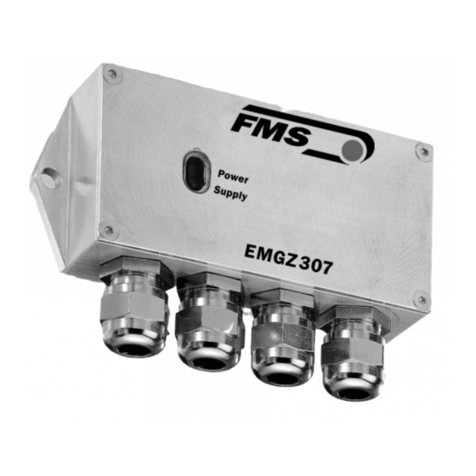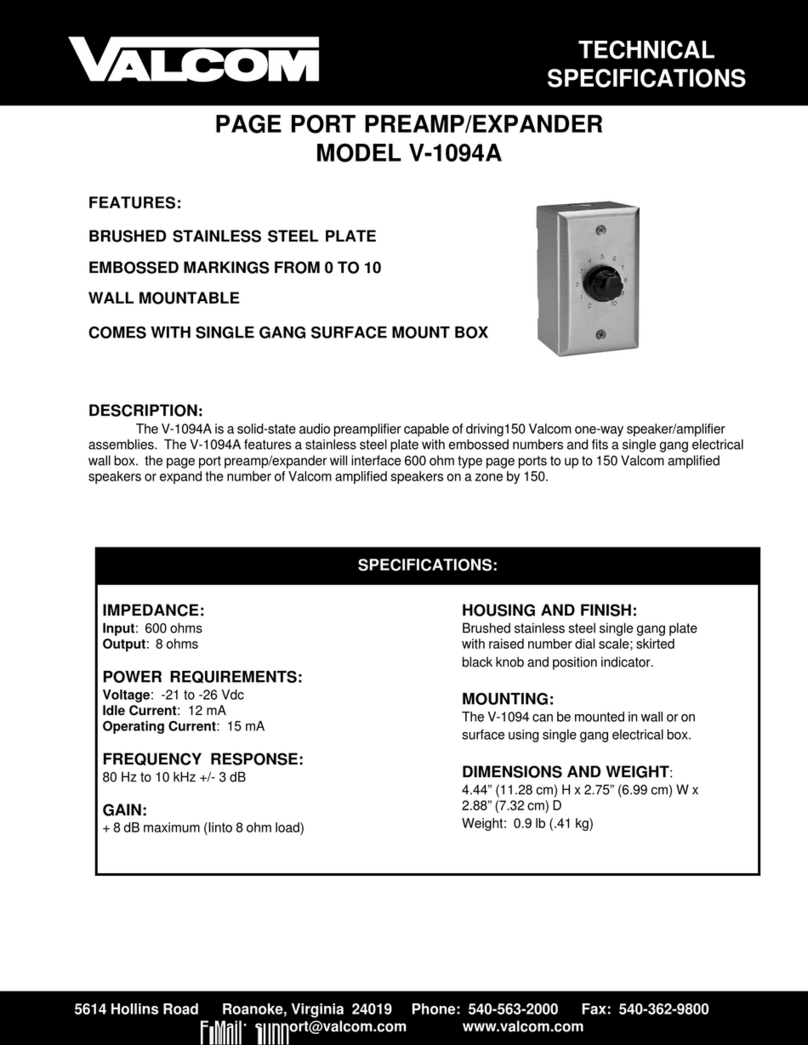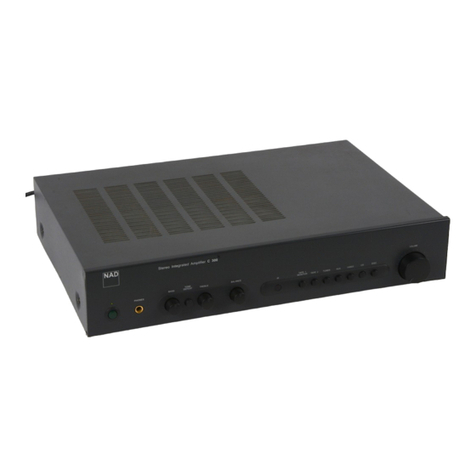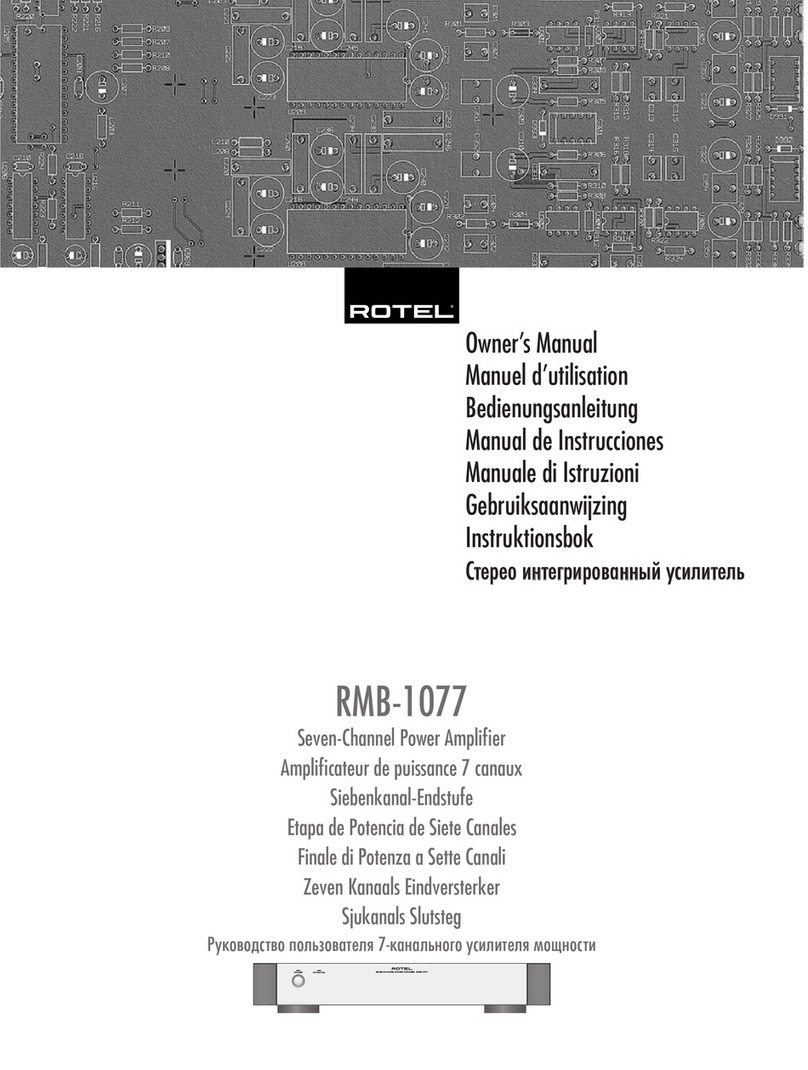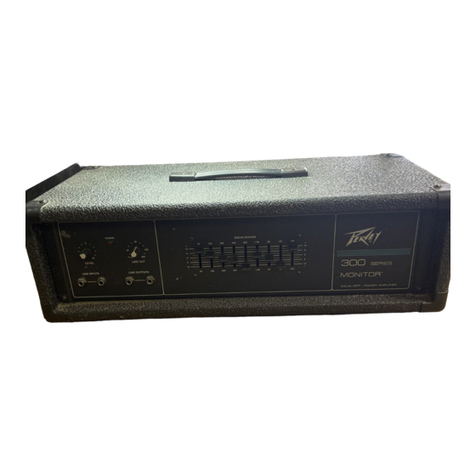ULTRAVOICE VX2000
83. RECORDING WITH THE ULTR VOICE
2.6 Rear panel
Fig. 2.6: Rear panel connectors of the ULTRAVOICE
This is the balanced XLR connector for microphones (MIC)
or LINE-level signals.
The LINE input is on a balanced 1/4" TRS jack.
This is the INSERT section on two 1/4" mono jacks that
provides the SEND and RETURN to other effects devices.
The signal is taken post-LO CUT-filter (input stage).
The XLR RECORDING output is for DAT/hard-disk
recorders, etc. and is taken pre-opto de-esser.
These are the MAIN outputs of the ULTRAVOICE, which
are on balanced XLR and 1/4" TRS jacks.
The mains connection is achieved via the standard IEC
connector. A matching power cord is included.
SERIAL NUBMER. The serial number is located on the rear
of the unit. Please take a few minutes and send to us a
completely filled out warranty card within 14 days of the
original date of purchase. Otherwise, warranty claims may
be rendered invalid. Or fill out the warranty information online
at www.behringer.com.
FUSE COM ARTMENT/VOLTAGE SELECTION: Before
plugging the unit into a power socket, please make sure
you have selected the correct voltage. Faulty fuses must
be replaced with fuses of appropriate rating without
exception. Some units feature a fuse compartment that can
be operated in two different positions, allowing alternating
between 230 V and 120 V. Attention: when using the unit
outside of Europe (running on 120 V), you have to implement
a fuse with a higher rating.
3. RECORDING WITH THE
ULTRAVOICE
When youre recording with the ULTRAVOICE you should try
to achieve a natural sound image of high quality in the first place.
Any special sound of the program material can be realized later
on during the mixdown, without affecting the recorded signals.
1) Use the GAIN control of the discrete vintage input stage to
set a gain level that suits the input material.
2) Be sure to take all measures that enable you to achieve the
best sound possible: Check the microphone for its optimum
position and the room acoustics for compliance with the sound
you wish to achieve. Start by disabling all components of the
ULTRAVOICE in order to optimize the dry, i.e. unprocessed
signal.
3) If required, use the opto compressor to smooth out the overall
signal dynamics. Avoid overcompressing the signal, you can
compress it again after recording. Dont use the hard ratio
function in the first place, because it affects your signal audibly.
If the singer doesnt keep a steady distance between mouth
and microphone, the vocals may suffer from considerably
varying dynamics. In this case, you should choose a higher
compression setting. Set a relatively low threshold level on
the opto compressor to ensure a constant loudness level.
+Make sure that singers keep a steady distance between
m uth and micr ph ne, s as t av id the need f r
excessive c mpressi n.
When youre recording backing vocals, the signals should be
compressed heavily to produce a steady loudness level during
the entire recording.
4) Use the voice-optimized EQ to make up for deficiencies in
the sound image, which cannot be eliminated before. Dont
use extreme settings, you can still add some equalization
during the mixdown. The voice-optimized EQ can be used to
solve the following problems:
sIf a v cal track lacks transparency in the bass range, y u
can use the WARMTH c ntr l t fade ut l w-frequency
signals. Set the c ntr l t full reducti n, then use the
TUNING c ntr l t identify the disturbing frequency range,
until the v cals are m re balanced in s und. Start by
s l ing the track, then check it t gether with the
remaining signals. Adjust the WARMTH c ntr l until the
verall s und is perfect.
sIf the v cals are t harsh, use the ABSENCE switch f
the v ice- ptimized EQ t attenuate the frequencies that
are resp nsible f r the harsh s und. Additi nally, y u
can turn up the WARMTH c ntr l a bit r use the BREATH
r PRESENCE c ntr ls t filter the signals high-
frequency range.
sIf the v cals are dr wned ut in the verall mix, increase
their PRESENCE t bring them m re t the fr nt.
sIf the verall signal lacks brilliance, y u can enhance the
treble range with the PRESENCE r BREATH c ntr ls.
Or use the pt c mpress rs enhancer functi n t add
s me upper harm nics.
5) If the vocal tracks contain unwanted frequencies, you can
use the expander and opto de-esser to remove them. The
opto-de-esser also eliminates disturbing sibilance. First, you
need to identify the frequency range containing unwanted
signals:
sActivate the v ice- ptimized EQ and turn up the BREATH
c ntr l t raise the sibilant frequency range. If y u have
already used the EQ, remember the riginal setting t be
able t repr duce it later n.
sActivate the pt de-esser; adjust a l w thresh ld then
turn the CUT FREQ c ntr l until the sibilant s unds are
audibly l wered in level.
sN w y u can disable the v ice- ptimized EQ and/ r set
the BREATH c ntr l back t its riginal p siti n.
sAdjust the thresh ld s that the ACTIVE LED lights up
with sibilant s unds nly.
The expander allows you to remove disturbing signals in low-
volume passages. Set the THRESHOLD control fully
counterclockwise, choose a medium DEPTH rate, then turn the
THRESHOLD slowly to the right, until soft passages are audibly
reduced in level, without affecting the quality of vocal tracks. While
recording, the gate function should only be used in extreme cases,
for example, to produce a special effect. The gate is quite effective
on the overall sound image and could ruin your recording.

